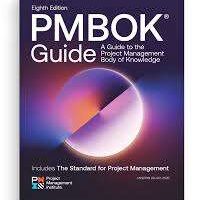
Operational Plan, Tactical Plan & Strategic Plan
- Posted by Winnex
- Categories Project Management
- Date 18 June 2023
In organizations, setting vision (future result), mission (actions to achieve vision), and values (internal aspects to achieve customer satisfaction) is essential to sustain the long-term business. To achieve the vision, the organization should develop three plans. They are strategic plan, tactical plan, and operational plan.
- Strategic plan: They are long-term plans that are made for achieving the organization’s goal or vision. This will act as a guideline to move the organization from where it is currently to where it wants to be. It should be achieved in the long-term (2-5 years depending on the vision or goal).
- Tactical Plan: They are made for supporting the implementation of the strategic plan. They are made by middle-level managers by consulting with lower-level managers. The success of a tactical plan depends on the success of the operational plan. It should be achieved in the mid-term (every 6 months, depending on the strategic plan).
- Operational Plan: They are made for supporting the implementation of tactical plans and the achievement of operational goals. It should mention the actions to be done in short term to achieve the operational goals. It can be prepared by lower-level managers by consulting with middle-level managers. It should be achieved in the short-term or even every day (3 months depending on the tactical and strategic plan).
The sequence of actions to be set in an organization for continuous improvement is as shown below:
- Vision: It is a description of what the organization wants to achieve in the future. This can be prepared by upper management.
- Mission: It is a description about what a activities should be done to achieve the vision.
- Goal: What to achieve in the short term, most often it would be intangible. For example Goal 1: Complete ISO certification in August 2022; Goal 2: Setting KPI in Octo 2022
- Objective: Purpose of activities that are defined and implemented in the organization. It is a measurable target, most often it would be tangible. For example, to achieve customer credibility.
- CSF (Critical Success Factors): Something that must happen as part of a business or project or program. Generally, KPIs are used to measure the CSF.
- KPI (Key Performance Indicators): Most important metrics that are set to the organization for continuous improvement, effectiveness, and efficiency of the process, product, and people. For example, the number of new contracts signed.
- Metrics: Something set for quantitative assessment, commonly used for assessing, comparing, and tracking performance. For example, downtime of server
You may also like

A New PMP® exam is coming in July 2026
20 November 2025

Winnex Institute has launched PMP Easy Pass Sessions
10 March 2025


